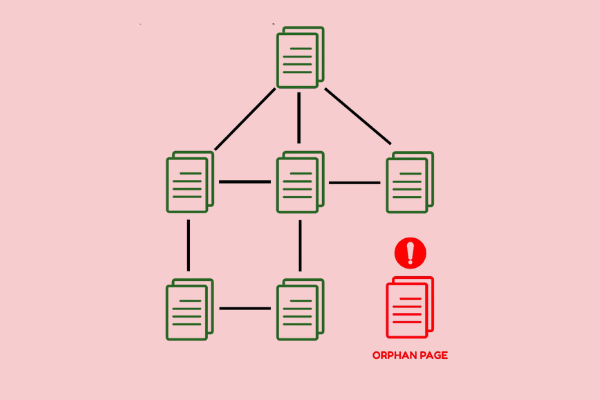Last Updated on 1 year ago by
In today’s digital landscape, website performance plays a crucial role in user experience and search engine rankings. One effective technique to enhance website speed and efficiency is to lazy load images. This method can significantly improve loading times, especially for image-heavy websites. Partnering with a reputable SEO agency can help you implement this strategy effectively, ensuring optimal performance and better search engine visibility.
What is Lazy Loading?
Lazy loading is a design pattern commonly used in web development to defer the loading of images and other resources until they are needed. Instead of loading all images at once, lazy loading only loads them when they are about to enter the viewport. This technique reduces the initial load time of the webpage, leading to faster performance and improved user experience.
Benefits of Lazy Loading Images

Implementing lazy load images offers several advantages that can enhance both the functionality and user experience of a website.
Improved Page Load Speed
One of the primary benefits of lazy load images is the significant improvement in page load speed. By only loading images as they are needed, the browser can render the page much faster. This is particularly beneficial for websites with a large number of images, as it reduces the initial load time and makes the site feel more responsive.
Enhanced User Experience
Faster load times directly contribute to a better user experience. Visitors are less likely to abandon a site that loads quickly, leading to increased engagement and lower bounce rates. Lazy loading ensures that users can start interacting with the site content immediately, without having to wait for all images to load.
SEO Benefits of Lazy Load Images

Lazy loading not only improves user experience but also offers significant SEO benefits. Search engines prioritize fast-loading websites, and implementing lazy load images can positively impact your search engine rankings.
Higher Search Engine Rankings
Search engines like Google consider page load speed as a ranking factor. By improving your website’s performance through lazy loading, you can achieve higher search engine rankings. A faster website also means that search engine crawlers can index your pages more efficiently, further enhancing your SEO efforts.
Reduced Server Load
Lazy loading reduces the strain on your server by only loading necessary resources. This can be particularly advantageous during high traffic periods, as it minimizes the risk of server overload and ensures that your website remains accessible and fast.
How to Implement Lazy Loading

Implementing lazy load images involves several steps, from choosing the right tools to optimizing the implementation for your specific needs.
Choosing the Right Library or Plugin
There are numerous libraries and plugins available that can help you implement lazy loading on your website. Some popular options include LazyLoad, Lozad.js, and Intersection Observer API. These tools provide easy-to-use solutions that can be integrated into your website with minimal effort.
Optimizing Images for Lazy Loading
Before implementing lazy load images, it is essential to optimize your images for the web. This includes compressing images to reduce their file size without sacrificing quality. Tools like Photoshop, TinyPNG, and ImageOptim can help you achieve optimal compression.
Best Practices for Lazy Loading Images

To ensure the best results, follow these best practices when implementing lazy load images on your website.
Use Placeholder Images
Using placeholder images can improve the visual experience while the actual images are loading. Placeholders give users a visual cue that an image will load soon, reducing the perceived load time and keeping the layout intact.
Monitor Performance
After implementing lazy load images, it is crucial to monitor your website’s performance regularly. Use tools like Google PageSpeed Insights, GTmetrix, and Lighthouse to track loading times and identify areas for improvement. Regular monitoring ensures that your lazy loading implementation remains effective and continues to provide benefits.
Common Mistakes to Avoid

While lazy loading can significantly improve website performance, it is essential to avoid common mistakes that can undermine its effectiveness.
Incorrect Implementation
Incorrect implementation of lazy loading can lead to issues such as images not loading at all or loading too late. It is essential to thoroughly test your implementation across different browsers and devices to ensure that images load correctly. Using reliable libraries or plugins and following their documentation can help prevent such issues.
Ignoring SEO Best Practices
When implementing lazy load images, it is crucial not to overlook SEO best practices. Ensure that all images have appropriate alt text, which helps search engines understand the content of the images. Additionally, make sure that lazy loading does not interfere with the crawling and indexing of your images by search engines.
Future of Lazy Loading

As web technologies continue to evolve, the techniques and tools for lazy loading will likely improve, making it even easier to implement and more effective.
Integration with Modern Frameworks
Modern web development frameworks such as React, Vue.js, and Angular are increasingly incorporating lazy loading features. This integration makes it easier for developers to implement lazy loading as part of their standard development workflow.
Advances in Browser Support
Browser support for lazy loading has improved significantly, with many modern browsers now offering native support for the feature. This reduces the reliance on third-party libraries and plugins, simplifying the implementation process.
Lazy load images are a powerful technique for improving website performance and user experience. By deferring the loading of images until they are needed, websites can achieve faster load times, enhanced user engagement, and better SEO performance. Working with a SEO agency can help you implement this strategy effectively and ensure that your website performs optimally. Regular monitoring and adherence to best practices will maintain these benefits over time.
By focusing on key aspects such as choosing the right tools, optimizing images, and avoiding common pitfalls, businesses can leverage lazy loading to create faster, more efficient websites. As the digital landscape continues to evolve, staying updated with the latest developments in lazy loading and web performance will be crucial for maintaining a competitive edge. For businesses involved in e-commerce site design, implementing lazy load images can significantly enhance the user experience, leading to higher satisfaction and better conversion rates.












